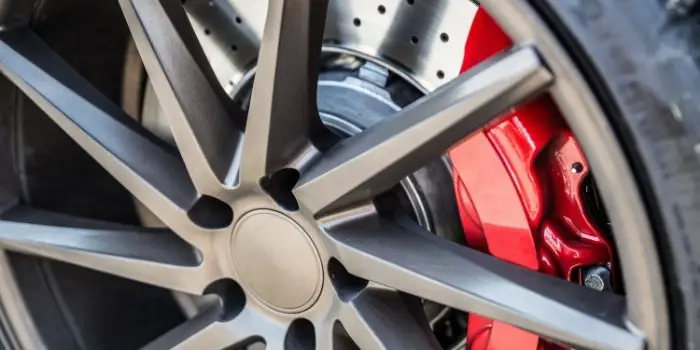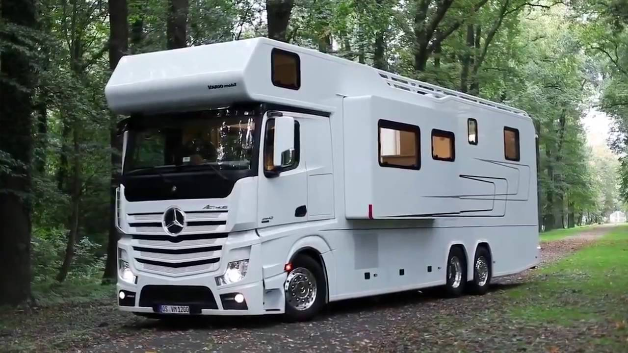
Heat creates a slew of issues with your vehicle.
You may already be aware of the typical components of your car that might experience intense heat, such as the exhaust outlets and inlets, pistons, cylinder head, and radiator.
But did you realize that your brakes may overheat as well?
The friction between your brake pads and rotors causes your automobile to stop.
Wherever there is friction, there is heat.
When the temperature rises to dangerous levels, braking difficulties occur. So, how can you detect the signs of brake overheating and how can you fix the problem.
In this article, we will go through these questions in detail and much more.
Table of Contents
What are the signs of brake overheating?
Brakes are one of the most important features of any vehicle since they allow you to stop.
This is why it is critical to perform regular maintenance and rapid repairs.
Here are some symptoms of brake overheating:
1- Car deceleration
When you’re driving and feel like the vehicle is slowing down even though your foot is off the brake pedal, it might be a sign that your brakes are overheating.
Try shifting into neutral and pressing the brake pedal; if the pedal isn’t smooth, it’s a symptom that you need to cool off your brakes.
2- Brake pedal pulsation
Another sign of overheated brakes shocks up your leg when you press the brake pedal.
This occurs when you hit the brakes forcefully while driving at a high speed. The pulsing sensation indicates that the brakes are heated.
3- The smoking wheels’ temperature
If you smell anything burning, such as charcoal or burned rubber, it might be your tires becoming smoked up.
This indicates that your brakes are hot right now.
I personally usually use an infrared thermometer to check the temperature of the rotors, which verifies the degree to which the brakes have overheated.
4- Stuck wheels
If you move your automobile or elevate it with a jack and sense resistance, this indicates that your brakes are overheated.

What is the normal temperature of a brake rotor?
During a typical run, the rotors may reach temperatures of 200 degrees Celsius (392 degrees Fahrenheit).
When you’re driving for long hours the temperature of the rotors may reach 1000 degrees Fahrenheit due to the intensive usage of brakes, which causes rapid wear and tear.
To prevent overheating the rotors, avoid applying the brakes often and instead utilize the downshift technique instead to slow your car down.
Why does brakes get red hot and begin to smoke?
This occurs as a result of the stuck piston or wheel bearings heating up.
When this occurs, the cylinder presses on the brake shoe, which then pushes on the rotor’s drum.
As a result, there is a lot of friction between various components of the braking system. When this occurs, you will see black dust on the wheel covers, indicating that the brakes have heated up.
Another factor is that the wheel bearings are beginning to heat up.
When this occurs, the temperature of the whole braking system rise, turning the brakes red hot and causing smoke to spew from the rotor.
This also causes the rotor’s color to shift from blue to pink, indicating that it needs to be replaced.
What to do if your car brakes begin to overheat fast?
When you begin to notice the above-mentioned signs, your best plan of action is to slow down and locate a safe location to park.
While you wait for your brakes to cool down, look for the closest brake repair provider.
Then drive to that spot while taking care to drive slowly and cautiously so your brakes don’t overheat.
How to prevent overheating?
Because prevention is preferable to cure, adhere to your vehicle’s maintenance plan to ensure your braking system is tested regularly and its components are changed as specified by your manufacturer.
Keep the following in mind as well:
- Only use high-quality replacement components.
- Locate a reputable service facility or repair.
- To guarantee equal wear, replace the components in pairs.
- Keep an eye on the thickness of your brake pads and discs.
Most manufacturers advise replacing front brake discs between 30,000 and 40,000 kilometers, and rear rotors between 40,000 and 50,000 kilometers.
However, schedules will fluctuate depending on the manufacturer.
It is also beneficial to consider your driving style.
If you’re a reckless driver who often slams on the brakes and brake discs, you’ll need to replace your discs and rotors sooner.
FAQs
What causes brakes to overheat following a brake job?
This is a frequently asked question. The slider pin’s movement might be the cause.
If the pin’s mobility is poor, the brake pads will overheat and wear out quicker than normal, even after brake service.
Another cause might be the brake pads themselves. It is possible that the brakes will be damaged if they are too tight and do not have enough room to glide between retainers.
Is it typical for one brake disc to get hotter than the other?
No, when the brakes heat up, it occurs in both discs at the same time.
There are two methods for determining the state of the discs. The condition of the discs may sometimes be determined just by glancing at the color of the discs.
You must elevate the automobile to inspect the color of the discs. Use a jack for this.
Once you have access below, check to see whether the rotor is blue (normal) or pink (rotor replacement required).
How to select new brake discs in case you need to buy them for replacement?
It is important to remember that a faulty automobile braking system endangers your safety as well as the safety of others.
As a result, you should make an informed decision about the braking system components you need to purchase.
When selecting brake discs, you must follow the advice and technical criteria specified by your vehicle’s manufacturer.
Remember to always purchase brake discs that are specially intended for your car.
Brake discs should be composed of materials that have the following properties:
- High strength and heat transfer capability
- Poor adhesion capacity
- And a high friction coefficient
You should only get dependable vehicle components that are guaranteed to be of high quality.

Based in Orem (Utah) John Paterson graduated from Utah Valley University and has begun writing in 2009. He has a large wealth of experience in writing articles related to cars, automotive repair, wheels, cleaning/maintenance, and much more. He has also written instructional articles in a similar niche for a few online publications as well. Currently, he works as a mechanic in his personal garage shop where he loves serving his countrymen from his heart.




